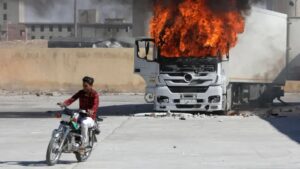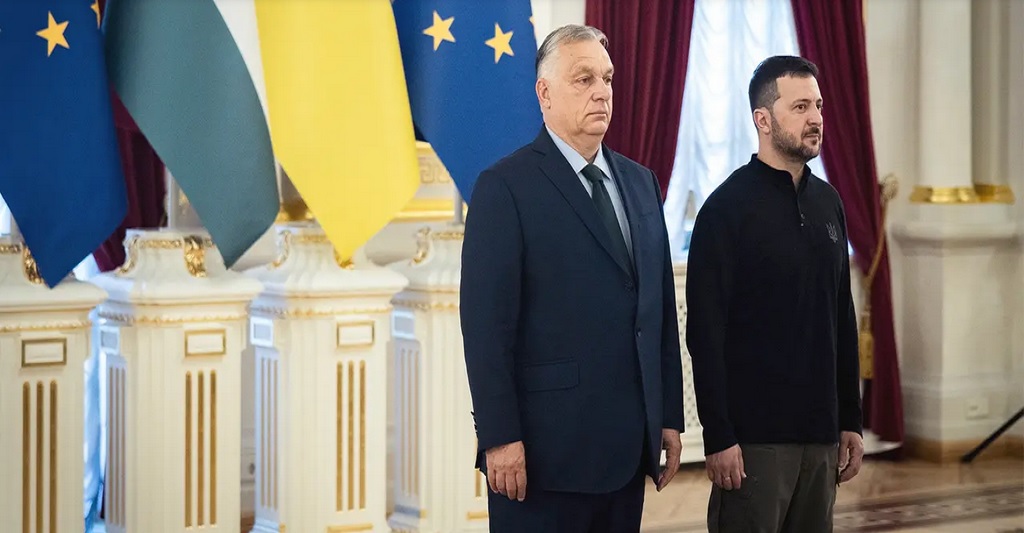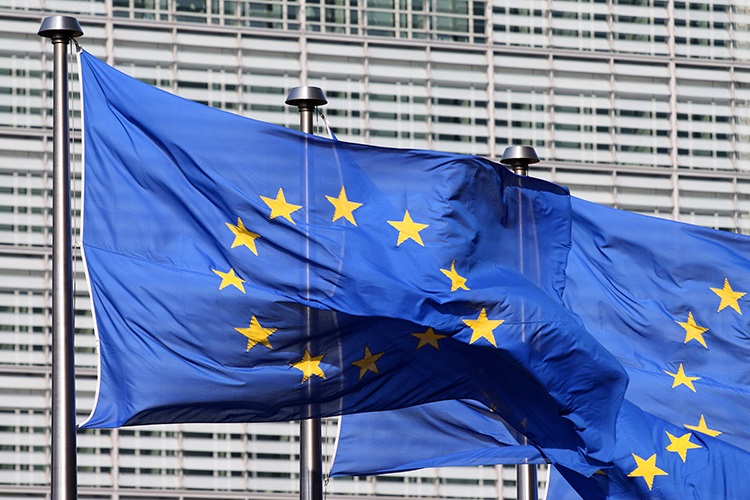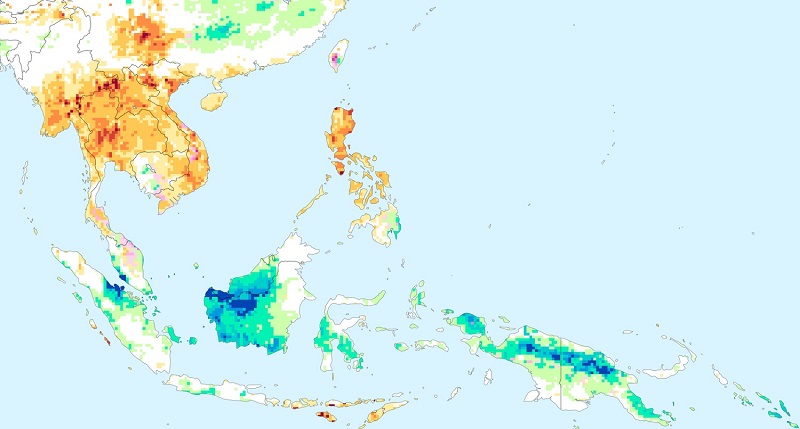Girl (12) Missing, Likely Killed by Crocodile in Northern Australia
July 4, 2024
NGANMARRIYANGA, Northern Territory, Australia – Emergency services have been searching frantically for a 12-year-old girl who went missing on Tuesday afternoon after being swept away by a crocodile in a remote area of northern Australia. The young victim has not been seen since she was swimming in Mango Creek, about 350 kilometers southwest of the city of Darwin.
“Our thoughts are with the family and the community during this incredibly difficult time,” said police spokeswoman Erica Gibson. “We have deployed officers and residents in boats to search a large section of the waterway, but so far we have found no trace of the young girl.”
The incident occurred in the Aboriginal community of Nganmarriyanga, which lies in the tropical north of Australia’s Northern Territory. This remote region is home to both saltwater and freshwater crocodiles, with the saltwater variety posing a much greater threat to humans.
Saltwater crocodiles, also known as estuarine crocodiles, can grow up to 6 meters (20 feet) in length and are considered to be among the most dangerous crocodilian species in the world. They are known for their immense size, incredible power, and remarkably aggressive nature.
“Saltwater crocodiles are apex predators and will attack humans without provocation,” explains Dr. Sarah Wilson, a crocodile expert at the Northern Territory’s Department of Environment. “They are territorial, protective of their nesting sites, and will see humans as potential prey. A large saltwater crocodile could easily overpower and kill a 12-year-old child.”
In contrast, freshwater crocodiles, nicknamed “freshies,” are generally much smaller, growing up to 3 meters (10 feet) in length. While they are still capable of delivering a powerful bite, freshwater crocodiles are typically less aggressive towards humans and only attack if they feel directly threatened.
“Freshwater crocodiles are much less likely to view humans as prey,” continues Dr. Wilson. “They tend to be more skittish and will usually try to flee or hide from people, rather than engaging in an attack. Fatal encounters with freshwater crocodiles are extremely rare.”
The Northern Territory is home to an estimated 100,000 crocodiles, both saltwater and freshwater varieties. On average, there are around two fatal crocodile attacks per year across the whole of Australia. However, saltwater crocodile attacks make up the vast majority of these incidents.
Just last month, members of an Aboriginal community in the Northern Territory took matters into their own hands after a “problem crocodile” had repeatedly approached and threatened both animals and people in the area. The large saltwater crocodile was shot and then communally eaten by the local residents.
“Crocodile attacks, while rare, are always a major concern in this part of Australia,” says Gibson. “Saltwater crocodiles in particular pose a grave threat, and people need to exercise extreme caution when near waterways. Tragically, it appears this young girl may have become the latest victim of these apex predators.”
Extensive Search Efforts Yield No Trace of Missing Girl
The search for the missing 12-year-old girl began on Tuesday afternoon shortly after she was last seen swimming in Mango Creek. Local police, emergency services personnel, and members of the Nganmarriyanga community have been combing the waterway ever since, but so far there has been no sign of the young victim.
“We have deployed boats and search teams across a wide area, but unfortunately we have not been able to locate the girl,” Gibson told CNN. “The waterway is quite large and the terrain is challenging, making the search very difficult. We are devastated that we have not been able to find her.”
Authorities have not ruled out the possibility that the girl may have been pulled underwater and killed by a crocodile. Saltwater crocodiles are known to sometimes drag their prey into the water to drown them before consuming the body.
“Given the known presence of large, aggressive saltwater crocodiles in this region, it is a distinct possibility that the young girl was attacked and killed,” says Dr. Wilson. “Crocodiles of that size are more than capable of overpowering and drowning a 12-year-old child.”
The Northern Territory police and emergency services have been working around the clock in an effort to locate the missing girl. Search teams have combed the banks and waters of Mango Creek, as well as the surrounding bushland, but so far there has been no trace of the victim.
“We are doing everything we can to find this young girl and provide closure for her family and community,” says Gibson. “But the harsh reality is that as time passes, the chances of locating her alive grow increasingly slim. Our hearts go out to everyone affected by this terrible tragedy.”
Saltwater Crocodiles: Apex Predators of the Tropics
Saltwater crocodiles, also known as estuarine crocodiles, are the largest living reptiles on the planet. They can grow up to 6 meters (20 feet) in length and weigh well over a ton. These massive, prehistoric-looking creatures are found throughout the coastal regions of southeastern Asia and northern Australia.
“Saltwater crocodiles are truly apex predators,” explains Dr. Wilson. “They sit at the top of the food chain in the tropical habitats where they live, preying on a wide range of animals including fish, birds, mammals, and even other crocodiles. And unfortunately, they will also readily attack and consume humans.”
Saltwater crocodiles are renowned for their incredible power and aggression. They have the strongest bite force of any living creature, capable of exerting over 3,700 pounds per square inch of pressure. Their massive, heavily armored bodies are supported by powerful limbs and a thick, muscular tail that can deliver devastating blows.
“A saltwater crocodile’s sheer size and strength makes them extremely dangerous,” continues Dr. Wilson. “They have huge, dagger-like teeth that can easily tear through flesh and bone. And they are incredibly quick and agile in the water, where they are perfectly adapted to ambush and overpower their prey.”
Saltwater crocodiles are also highly territorial and protective of their nesting sites. Females will aggressively defend their eggs and hatchlings, while males will fiercely guard their breeding grounds and hunting areas. This territorial nature contributes to their notorious aggression towards humans.
“Saltwater crocodiles see humans as potential competitors or prey,” says Dr. Wilson. “They will not hesitate to attack people who venture too close to their domain. And due to their immense size and power, these encounters are almost always deadly for the human involved.”
While attacks by saltwater crocodiles are relatively rare, they do occur with greater frequency in the Northern Territory and other parts of northern Australia. On average, there are around two fatal crocodile attacks per year across the entire country.
“Crocodile attacks, while infrequent, are always taken extremely seriously in this part of Australia,” explains Dr. Wilson. “Saltwater crocodiles are apex predators, and people need to exercise the utmost caution when near any bodies of water where they are known to live.”
Community Grieves as Search Continues
The remote Aboriginal community of Nganmarriyanga has been left devastated by the disappearance of the 12-year-old girl. Local residents have joined the extensive search efforts, scouring the banks and waters of Mango Creek for any sign of the missing child.
“This is a terrible tragedy that has shaken our entire community,” says Nganmarriyanga elder Patricia Williams. “Our hearts go out to the family of this young girl. We are praying that by some miracle she will be found alive, but we fear the worst.”
Williams says that crocodile attacks, while not a daily occurrence, are a constant source of concern and dread for people living in the Northern Territory’s tropical regions.
“Saltwater crocodiles are a fact of life up here,” she explains. “We know they are out there, always lurking in the waterways. Every time our children go near the water, we worry that they might become the next victim.”
The Northern Territory government estimates that there are over 100,000 crocodiles, both saltwater and freshwater varieties, living in the region. Authorities have implemented various programs to monitor and manage the crocodile population, but attacks still happen with tragic regularity.
“We do our best to keep people safe, but the reality is that saltwater crocodiles are apex predators and they will attack humans if given the opportunity,” says Dr. Wilson. “Tragically, this young girl may have been in the wrong place at the wrong time.”
As the search for the missing 12-year-old continues, the Nganmarriyanga community has come together to support the girl’s family and mourn the potential loss of a beloved member.










